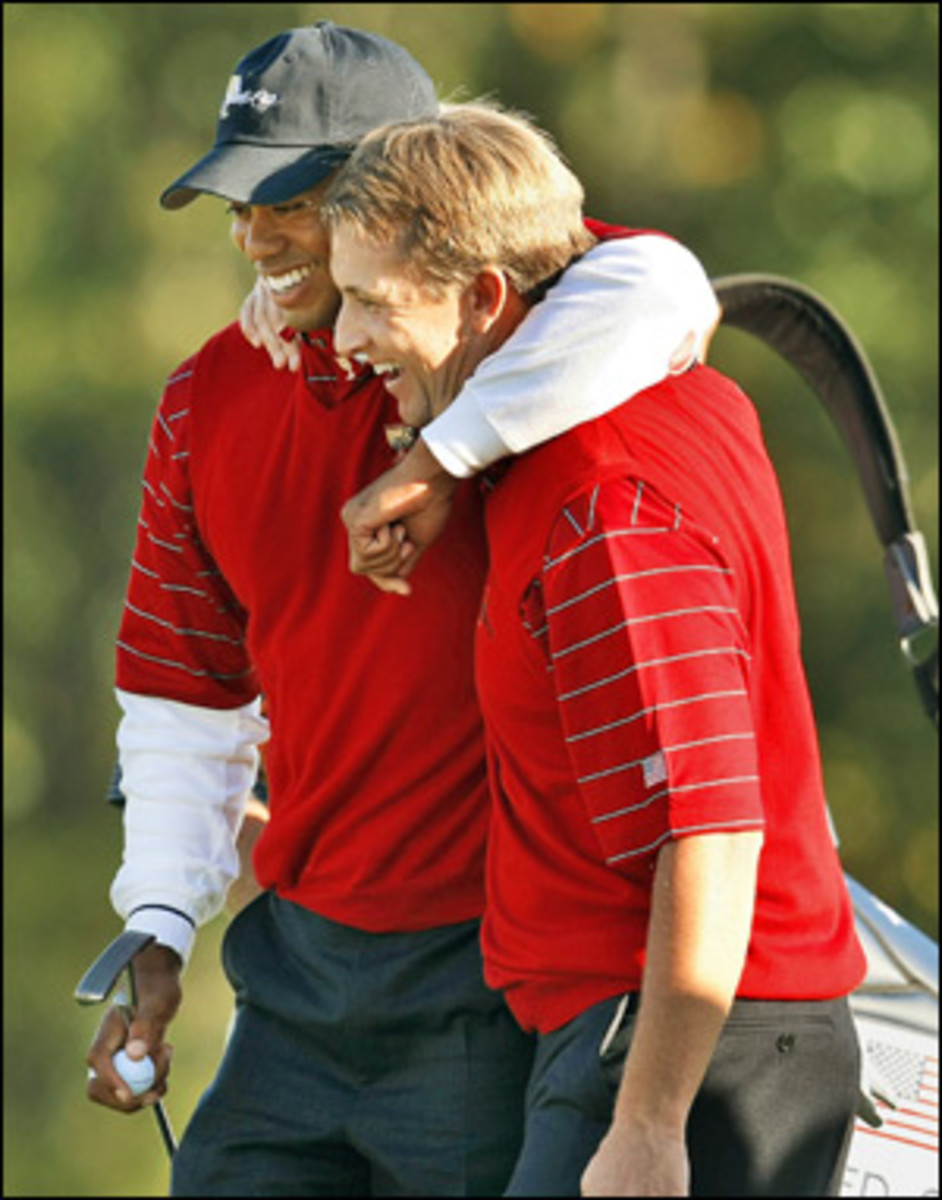The Year in Sports 2007
In early September the beautifully comported U.S. Walker Cup team went to Ireland and defeated a team of fellow amateurs from Great Britain and Ireland, 12 1/2 to 11 1/2. A week later the American women went to Sweden to play a European squad for the Solheim Cup and came back victorious, 16-12. Then in late September the American men, led by Tiger Woods and loosely managed by Captain Jack (Nicklaus), went to Canada for the Presidents Cup and won handily over Gary Player's International team, 19 1/2 to 14 1/2. The last time U.S. golfers had such a trifecta? Never.
For Woods, Phil Mickelson, Ernie Els, Annika Sorenstam and a few others, playing in these team events is a sacrifice. On any given off week, they could be making big bucks doing something somewhere. In September 2007 they instead spent a week helping the public identify new stars (Morgan Pressel), new characters (Woody Austin) and keeping some legends in the spotlight (Messrs. Nicklaus and Player).
The real stars of the Presidents Cup were David Toms (4-0-1), Scott Verplank (4-0) and Austin. The latter went only 1-1-3, but he looked like a man possessed doing it, falling backwards in a chilly pond after trying too hard on a shot, then donning goggles the next day. With the U.S. victory, one golfing mystery only deepened: The Americans are 5-1-1 in the seven Presidents Cups (the U.S. versus the rest of the non-European world) and 1-5 in the last six Ryder Cups (the U.S. versus Europe).
The Solheim Cup, the women's version of the Ryder Cup, was a showcase of homegrown American talent. Most notable was Florida's Pressel, a millionaire to her accountant but a teenager at heart and on her birth certificate. (She's 19.) Also making a mark, both at the Solheim Cup and over the course of the year, were Natalie Gulbis, Cristie Kerr, Paula Creamer and Britney Lincicome. The LPGA has never had so much talent or so many compulsively watchable players.
As for the Walker Cup team, it's not like it was in the old days, when all the Americans had to do was beat a bunch of scratch golfers named Nigel. Compounding the difficulty for the Americans was that for them the Walker Cup was a genuine road game, played on the bouncy turf of Royal County Down. You can't play the American, golf-by-numbers game and win on a true links. It takes patience, imagination and a certain degree of wit. Reports of the demise of those qualities among American golfers, we now know, are premature. -- Michael Bamberger
For men's pro golf to be interesting, you need players who can consistently challenge Woods. In 2007 most of the leading candidates -- Els, Jim Furyk, Vijay Singh, Retief Goosen -- took a step back. The only reason Mickelson is not on that list is because of his delicious win over Woods in Boston during the FedEx Cup playoffs. The guys who won the year's first three majors, Zach Johnson at the Masters and Ángel Cabrera at the U.S. Open and Padraig Harrington at the British Open, are likely one-offs. Where are the Arnold Palmers, the Billy Caspers, the Lee Trevinos, the Hale Irwins, the Johnny Millers and the Tom Watsons, multiple-major winners who helped define Nicklaus's career?
Woods won't win every time out, or anything like it, but for his record to have more luster -- more magic -- he needs real challengers. -- Michael Bamberger
Who would have guessed that Michelle would be a better golfer at 14 than she is now, at 18? Four years ago she was a prodigy. This year she graduated from high school, enrolled at Stanford and played eight LPGA events as a pro, earning $23,000, missing the cut three times and finishing with a 76.4 stroke average.
It's hard to say what's wrong with Wie. She said she broke her left hand in a fall last February and has had tendinitis in her right wrist, but the injuries were never described as significant by Wie, her parents or various (and often changing) representatives. Wie has endorsement deals said to be worth more than $12 million a year, and with big money comes high expectations and demands, and a kind of pressure few teenagers would be equipped to handle. But the expectations and demands were part of Wie's life in 2006, too, a year in which she contended in three majors.
In 2008 Wie is unlikely to get exemptions to play in PGA Tour events, based on her recent track record. She can play in six LPGA events on sponsors' exemptions, and she probably will. In the meantime the mystery of Michelle Wie deepens. -- Michael Bamberger






